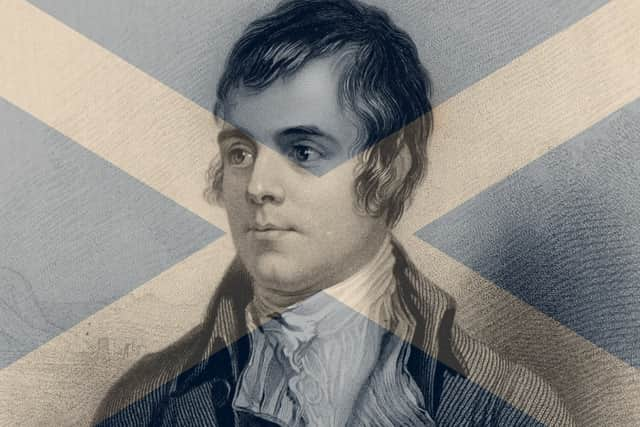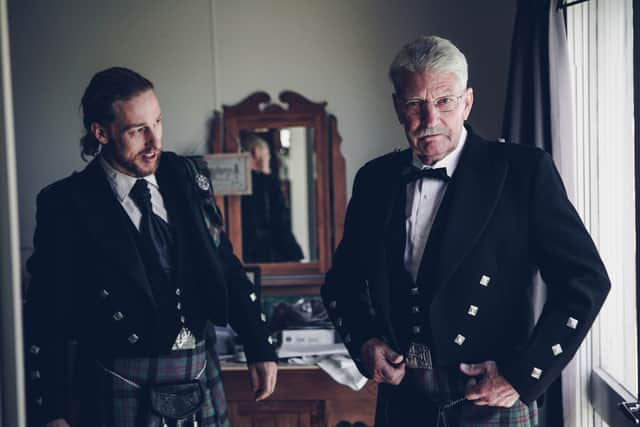Scottish Gaelic and Scots Difference Explained: Scotland’s oldest living language revealed


Although we live in an age of anglo-centricism, many countries including Scotland boast a diverse lingual landscape that can be seen with a mere glance of a Scottish map. Our unique place names reflect a decorated past of heritage languages such as Gaelic and others lost to time including Norn (imparted to us by the Vikings) or Brythonic; an ancient Celtic tongue associated with Scotland’s ancestors, the Picts.
Visitors will know, however, that even our modern English-speaking land is rich in different accents and dialects with all sorts of Scottish words, sayings and double meanings, peppered throughout our vocabulary. With some accents thicker than others… Glasgow is lovely this time of year. Such diversity is nothing new here, some of the most influential Scots of all time spoke many languages including Scottish Kings like Robert the Bruce.
Advertisement
Hide AdAdvertisement
Hide AdThe National Trust for Scotland suspect that Bruce was likely born in Turnberry Castle in Ayrshire “where he was raised to speak three languages – Gaelic, Scots and Norman French”. Those first two, Gaelic and Scots, are what sow a lot of confusion for many enthusiasts of all things Scottish. In a past article, we clarified how Scots is a sister language of English and not merely a dialect of it; a common misconception.
However, in recent years, the beloved TV show Outlander has sparked a ‘renaissance’ of Scottish languages via its inclusion of Scots and Gaelic. Many fans blanketed the pair into just “Scottish” despite the rich heritage that distinguishes them. Their individual legacies are powerful and far-reaching; you’ll likely know the Scots language via Roberts Burns or Gaelic through its famous speakers, including Donald Trump’s mother.
For clarity, here is an overview of Scots and Scottish Gaelic that explains their differences, the heritage that underpins them and which is considered Scotland’s oldest living language.


What is the difference between Scottish Gaelic and Scots?
Scots is a member of the West Germanic family of languages, its closest relative is English. The Dictionaries of the Scots Language explains: “It is a distinctive language, divergent from English since at least the fourteenth century.
“It shares with English a common ancestor: Old English, or Anglo-Saxon, the language that first emerged amongst Germanic incomers in south-east England during the fifth century CE, and which subsequently spread throughout much of the rest of the island of Britain.”
Scots is closely associated with the Scottish Lowlands which are in close proximity to England at their border.
Scottish Gaelic is a member of the Goidelic branch of Celtic languages which includes Irish and Manx. According to the Highland Council: “Settlers brought Gaelic to Scotland from Antrim in Ireland over 1500 years ago and it quickly spread from its initial base in what is now known as Argyllshire.
“At one time Gaelic was the language of the Scottish court and of the majority of the country’s population.”
Advertisement
Hide AdAdvertisement
Hide AdThis explanation has been hotly contested, however. Scottish archaeologist Dr. Ewan Campbell is well known for publishing the historical thesis ‘Were the Scots Irish?’ that suggested that Scotland’s Gaelic communities were not Irish in origin.
It states: “The author attributes the claimed migrations of the Irish into Argyll to a set of elite origin myths, finding no support in archaeological evidence.”
Campbell writes: “To summarise, if there was a mass migration from Ireland to Scotland, there should be some sign of this in the archaeological record, but there is none.
“If there was only an elite takeover by a warband, who must have adopted local material culture and settlement forms, there should be signs of the language of the native majority in the place names, but again there is none.
“A purely dynastic takeover would not have led to language change on the scale seen, and has no clear historical backing.”
Regardless, Gaelic is revered as an integral part of Scotland’s heritage and identity, particularly for those in the Scottish Highlands and Islands.


Examples of Gaelic and Scots
Gaelic
Learn Gaelic tells us that “Scottish Gaelic uses the same alphabet (A, B, C …) as English, though Gaelic uses just 18 of the 26 letters.”
The writing system can be challenging but fortunately there are many everyday English words derived from Gaelic such as Whisky (Scotch) from Uisge Beatha which means “Water of Life”.
Here are two written examples of Gaelic:
Advertisement
Hide AdAdvertisement
Hide Ad“Madainn mhath! Ciamar a tha thu an-diugh? Tha mi toilichte leis gu bheil e cho grianach.”
(Good morning! How are you today? I am happy because it is so sunny.”
“Ho, ho mo leannan, Ho mo leannan bhoidheach”
(Hey, hey my sweetheart, hey my beautiful sweetheart)
The last is a lyric from Runrig’s “Loch Lomond”, one of our many famous Scottish songs.
Scots
The Scots language uses the Latin alphabet just as English does. Just as you may be able to read Portuguese as a Spanish speaker or Danish as a Norwegian one, Scots is sometimes recognisable for English speakers.
Here are a couple of examples:
“Whit’s fur ye’ll no go by ye!”
(What’s for you will not go by you i.e., what’s meant to be will be.)
“Wi Scotland’s biggest skite o bairns’ beuks an a wheen o scots screivers haudin furth aboot aathing fae coorse vratches tae aulfarrant days and cuikin tae picters.”
(With Scotland’s biggest selection of children’s books and a good number of Scottish writers discoursing on everything from wicked wretches to days of old – and (from) cooking to pictures.)
Scots is often dismissed as just a dialect but advanced examples like the last one, found at an Aberdeen bookshop, often leave standard English speakers scratching their heads.


Are there similarities between Scottish Gaelic and Scots?
Advertisement
Hide AdAdvertisement
Hide AdWe can find shared vocabulary between Gaelic and Scots. However, it is not always clear if this means one language influenced the other or if they developed independently with common ancestry. Famous Gaelic words like glen (gleann), ben (beinn for Scottish Munros) or loch (used throughout almost all of Scotland except for the Lake of Menteith) are examples of words that transferred to Scots. Scots words like aye for “yes” (written as ‘aidh’ in Gaelic) or breeks for “trousers” (‘briogais’ in Gaelic) are said to be Germanic-derived.
Moreover, there is sometimes an idiomatic overlap between the two Scottish languages. For example, the Scotland Welcomes You website writes that the Scots expression “ma heid’s mince” means “my head’s a bit mixed up”. Similarly, in Gaelic we find “tha mo cheann na bhrochan” or “my head is porridge” which is colloquially synonymous.
Another similarity to note is syntax. The definite article in Gaelic and Scots appears in similar ways. Rather than “today” in English, Scots speakers say “the day” just as Gaelic speakers say “an diugh” which is the same. This is observed also in referring to the present, Scots speakers say “the noo” (now) just as it is expressed in Gaelic with “an-dràsta”.
Keep an ear out for shared phonology as well. The distinctive “ch” sound that appears in Scottish words like lochs or dreich (under terms for Scottish weather) features abundantly in both languages.


Scotland’s Oldest Living Language
As the Western Isles Council (Comhairle nan Eilean Siar) expresses: “Gaelic can legitimately claim to be Scotland’s oldest living language and continues to play a fundamental part in Scottish life being partly responsible for the creation of our unique national identity.”
The Celtic tongue has endowed the country with a rich culture including music and mythology. Visit Scotland adds: “The Gaelic community has supplied Scotland with many of the country’s national icons, including the kilt, tartan, sporran, bagpipes, ceilidhs, Highland games and whisky!”
Despite centuries of suppression during historical events such as the notorious Highland Clearances that followed the Jacobite uprisings, Gaelic has been preserved in many ways through literature, arts and the activism of its supporters e.g., Cultarlann Inbhir Nis who are working on “creating a Gaelic Cultural Centre in Inverness”, the capital of the Scottish Highlands.
The 2011 Census revealed that only 87,056 people in Scotland had ‘ability’ in Gaelic, making it the least spoken native language of the nation. There have been encouraging signs of a ‘renaissance’ of Gaelic, however, like the fact that “1.5 million people have started learning Scottish Gaelic on the app (Duolingo) since the course launched” around three years ago, as Sabhal Mòr Ostaig reports.
Comments
Want to join the conversation? Please or to comment on this article.
